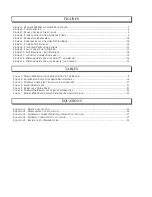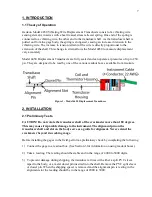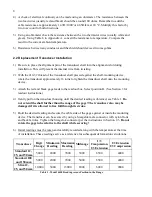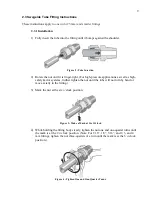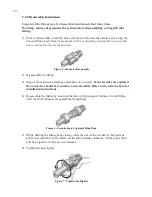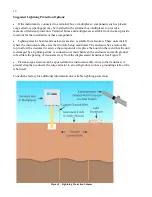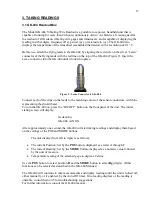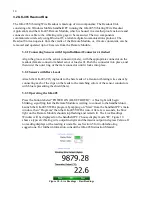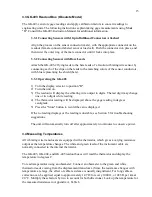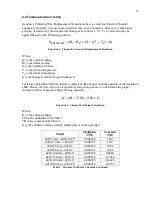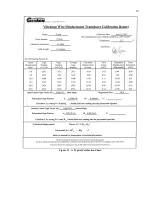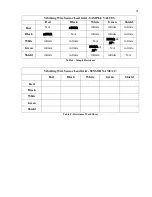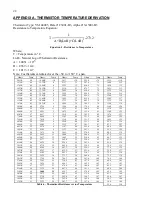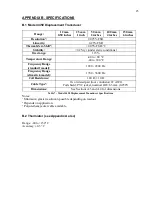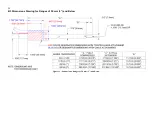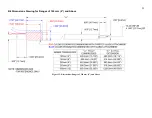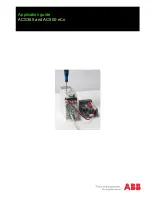
20
5. TROUBLESHOOTING
Maintenance and troubleshooting of displacement transducers is confined to periodic checks of
cable connections and maintenance of terminals. Once installed, the gages are usually
inaccessible and remedial action is limited. Should difficulties arise, consult the following list of
problems and possible solutions. Return any faulty gages to the factory.
Gages should not be
opened in the field.
For additional troubleshooting and support, contact Geokon.
Symptom: Thermistor resistance is too high:
There may be an open circuit. Check all connections, terminals, and plugs. If a cut is located
in the cable, splice according to instructions in Section 2.4.
Symptom: Thermistor resistance is too low:
There may be a short. Check all connections, terminals, and plugs. If a short is located in the
cable, splice according to instructions in Section 2.4.
Water may have penetrated the interior of the transducer. There is no remedial action.
Symptom: Instrument Readings are Unstable:
Is the readout box position set correctly? If using a datalogger to record readings
automatically, are the swept frequency excitation settings correct?
Is the transducer shaft positioned outside the specified range (either extension or retraction)
of the instrument? Note that when the transducer shaft is fully retracted with the alignment
pin inside the alignment slot (as shown in Figure 1) the readings will likely be unstable
because the vibrating wire is out of its specified range.
Is there a source of electrical noise nearby? Likely candidates are generators, motors, arc
welding equipment, high voltage lines, etc. If possible, move the instrument cable away from
power lines and electrical equipment or install electronic filtering.
Make sure the shield drain wire is connected to ground. Connect the shield drain wire to the
readout using the blue clip. (Green for the GK-401.)
Does the readout work with another gage? If not, it may have a low battery or possibly be
malfunctioning.
Symptom: Instrument Fails to Read:
Is the cable cut or crushed? Check the resistance of the cable by connecting an ohmmeter to
the gage leads. Table 4 on the following page shows the expected resistance for the various
wire combinations; Table 5 is provided to fill in the actual resistance found. Cable resistance
is approximately 14.7
Ω
per 1000' of 22 AWG wire. (Multiply this factor by two to account
for both directions.)
If the resistance is very high or infinite (megohms), the cable is probably broken or cut. If the
resistance is very low (
<
20
Ω
), the gage conductors may be shorted. If a cut or a short is
located in the cable, splice according to the instructions in Section 2.4.
Does the readout or datalogger work with another gage? If not, it may have a low battery or
possibly be malfunctioning.
Содержание 4450
Страница 2: ......
Страница 4: ......
Страница 19: ...19 Figure 11 A Typical Calibration Sheet ...
Страница 24: ...24 B 3 Dimensions Drawing for Ranges of 50 mm 2 and Below Figure 12 Dimensions Ranges of 50 mm 2 and Below ...
Страница 25: ...25 B 4 Dimensions Drawing for Ranges of 100 mm 4 and Above Figure 13 Dimensions Ranges of 100 mm 4 and Above ...

